Medellín may not be the main gateway to Colombia or South America. Yet, after spending some time in cold and cloudy Bogotá, most people end up falling in love with the city. Known as “The City of Eternal Spring,” Medellín not only has a warmer climate, but people are also friendlier, and there’s so much to see and do that you may find it hard to choose and leave. In this post, we’ll cover some tips to make your first trip to Medellín unforgettable and seamless.
In the following paragraphs, we’ll cover everything, from history to areas, must-see places, public transportation, and food you need to try in Medellín. So keep reading to get ready for your first time in Medellín.
What You Need to Know Before Your First Trip to Medellín, Colombia
1. A brief history of Medellín
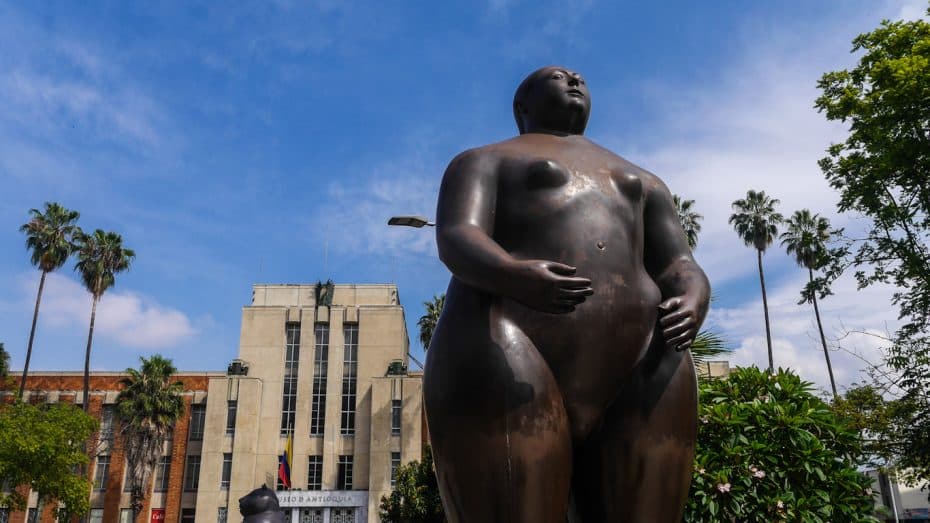
Medellín is in the northwestern part of Colombia, within the Aburrá Valley and surrounded by mountains. Initially inhabited by the Yamesí and Aburrá tribes, Spanish conquistadors under Jerónimo Luis Tejelo reached the valley in 1541. However, it wasn’t until 1616 that Francisco Herrera Campuzano founded the first settlement known as San Lorenzo de Aburrá.
In 1675, the city received the name “Villa de Nuestra Señora de la Candelaria de Medellín.” After that, the city’s development was relatively slow until the coffee boom in the early 20th century, which prompted rapid urbanization and industrial growth.
The city’s progress accelerated with the construction of a railway linking Medellín to the Magdalena River in 1875. By the beginning of the 20th century, Medellín had become a crucial hub for transportation and trade within Colombia. The city’s textile industry became its main export throughout the years, earning it nicknames such as “La Capital Industrial de Colombia” (The Industrial Capital of Colombia).
But unfortunately, during the late 20th century, Medellín faced some severe challenges. The city became infamous due to drug cartels, with prolific names like Pablo Escobar leading criminal activities, causing havoc and panic. It wasn’t until he died in 1993 that significant efforts towards social and urban renewal started. These efforts included creating cable cars to connect hillside communities to central areas. Likewise, Medellín became the only city in Colombia with a metro system during this period.
Nowadays, Medellín is proud of its transformation into a safe and welcoming city with an excellent cultural scene. Like a phoenix, the town rose from the ashes of violence and drug trafficking to become an unmissable place in Latin America. You can see how the city remembers its past in its many graffiti and street art murals.
In case you missed it…
2. When to plan your first time in Medellín
Medellín experiences consistent temperatures throughout the year due to its position near the equator, with an average temperature of 71ºF (22°C). High temperatures average around 82ºF (28°C) during the daytime, and, at night, they can drop to 60ºF (16°C).
Moreover, Medellín does not have a distinct four-season cycle but instead experiences two dry and two wet seasons yearly. The dry seasons occur from December to February and from July to August. Hence, these are the best times to visit Medellín for sightseeing since it won’t rain as much and you could do outdoor activities. However, locals will tell you that you can almost always count on rain in the city, so don’t forget to pack an umbrella and raincoat.
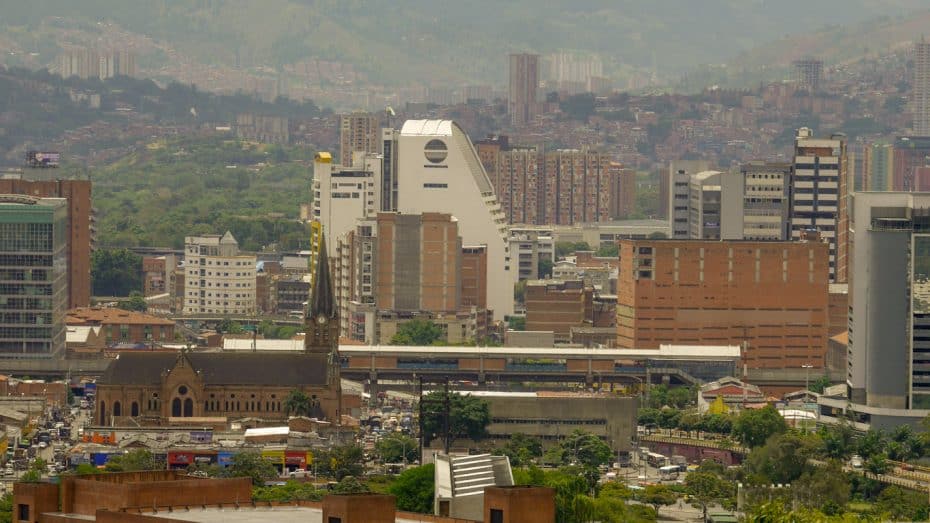
3. Where to stay during a first trip to Medellín, Colombia
El Poblado is a district in the southeastern part of Medellín. Known for its higher standard of living, safety, and metropolitan feel, it frequently stands out among the best areas to stay in Medellín.
El Poblado is also Medellín’s nightlife area per excellence. You’ll find all kinds of clubs in the neighborhood, particularly around Parque Lleras. Some clubs specialize in electronic music, others in pop and Latin rhythms, while a few, called “fondas,” only play traditional Colombian music. Likewise, there are several LGBT venues in El Poblado.
Regarding accommodation, El Poblado houses luxury experiences, including hotels, tourist apartments, B&Bs, and hostels. You will some of the coolest hotels in Medellín in this district.
4. Must-See Attractions in Medellín
If you’re planning your first trip to Medellín, you may wonder what must-see attractions you can’t miss. Here’s a list of mandatory stops in Medellín, even during a short vacation:
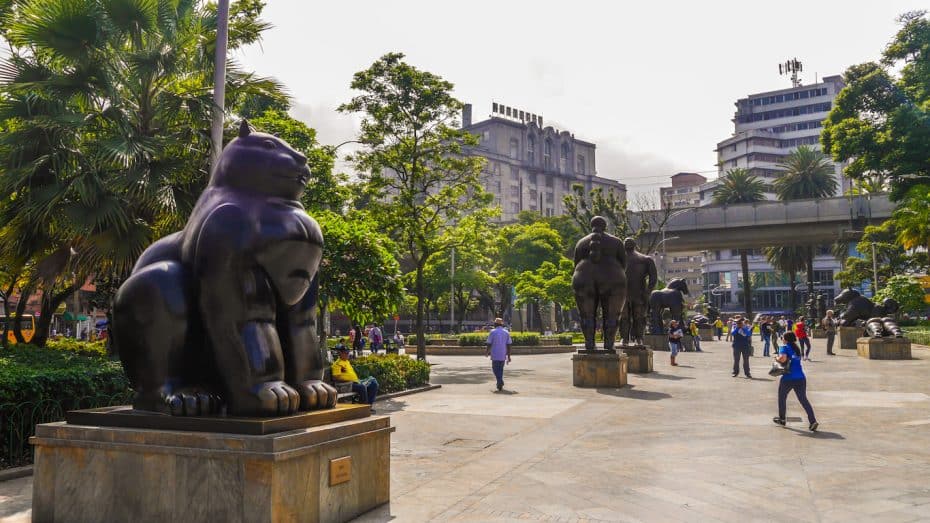
- Botero Square. This urban square in central Medellín features twenty-three bronze sculptures created by Fernando Botero, a city native. The artist donated these oversized artworks in 2002 and set them before the striking Museo de Antioquia, established in 1881. There’s also a tour of the square that includes a snack.
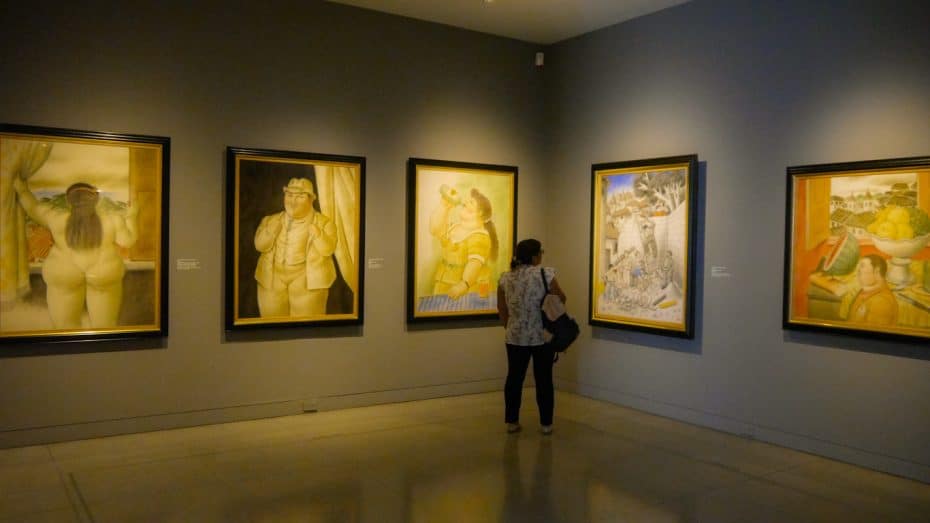
- Museo de Antioquia. Founded in 1881, this Colombian museum exhibits works that are significant to the region’s cultural heritage. It is located in Plaza Botero and is open to the public Tuesday through Saturday between 10:00 AM and 5:30 PM. The admission fee is 25.500 pesos (around $7) for adults. You can buy tickets for the museum online to skip the line. Inside, you can see some paintings by Botero.
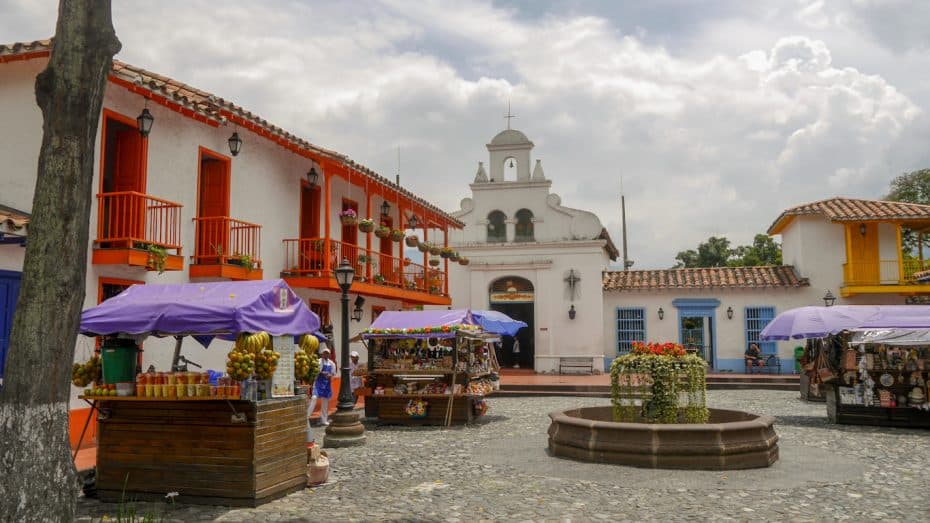
- Pueblito Paisa. This replica of a traditional Antioquian town square is atop Nutibara Hill. Visiting this attraction will give you insight into regional life in earlier eras. The small village includes a chapel, a schoolhouse, and various shops around a central plaza.
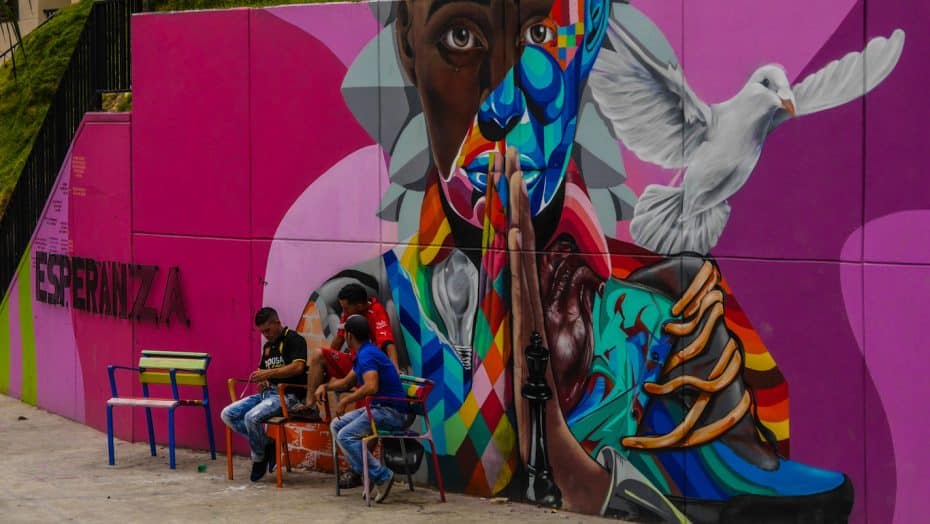
- Comuna 13. This area is noteworthy for transforming from one of the most troubled communities into a symbol of innovation and urban development. Historically, the Comuna 13 neighborhood suffered from violence and control by criminal gangs, especially during the 1990s and early 2000s. Nowadays, it is one of Medellín’s most visited attractions, especially for a graffiti tour. After all, its walls perfectly represent the city’s creativity and sense of humor, even in the face of adversity.
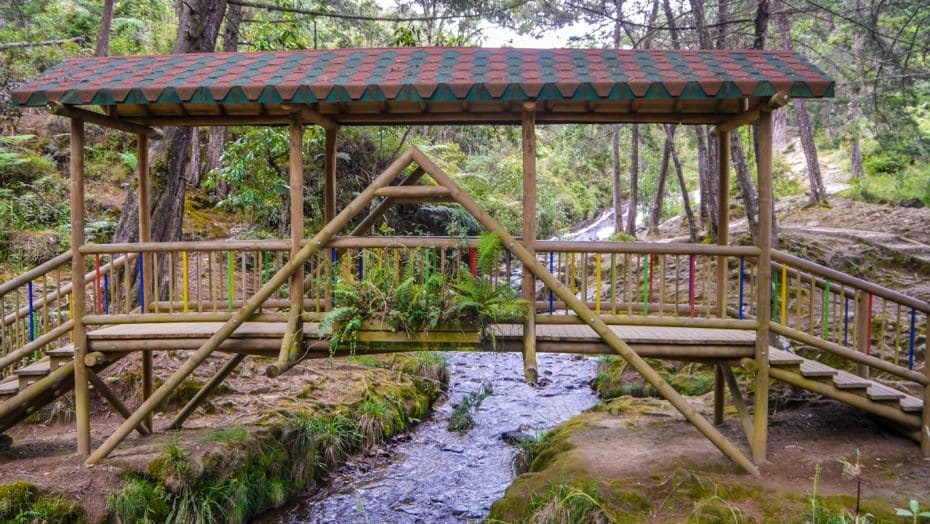
- Arví Park. This public ecological nature preserve and archaeological site, dating back to pre-Hispanic times, covers an area of approximately 1,761 hectares. It offers outdoor activities and educational information about local ecology. The park charges for guided tours, while general access is free. To get to the park, you can board the Metrocable, a funicular and an attraction. That said, considering the park’s size, you will benefit from booking a guided tour.
5. How to get to Medellín
Reaching Medellín, the capital of Antioquia Department in Colombia, is possible through several transportation options. Here’s an overview of the different options to travel to Medellín:
- Flying is the quickest way to get in Medellín. José María Córdova International Airport, roughly 65 feet (20 km) southeast of the city center, serves as the main aerial gateway. The airport manages international flights from several countries in North and South America and Europe and domestic flights from major cities within Colombia.
- Likewise, buses connect Medellín with major Colombian cities. The city’s primary bus terminals are the Terminal del Norte and Terminal del Sur. These terminals manage routes connecting Medellín to regions within Colombia and destinations in neighboring countries like Venezuela and Ecuador.
- Lastly, you can also rent a car in Colombia to reach Medellín. Major routes leading to Medellín include Route 25, connecting Bogotá to Medellín, and Route 60 which traverses from west to east, linking coastal regions with the country’s interior.
6. How to move around Medellín
The city’s public transportation system includes Metro de Medellín, which began operations on November 30, 1995. Medellín’s metro is the only metro system in Colombia. It consists of two lines, Line A and Line B, covering various parts of the city from north to south and downtown to the west, respectively. Additionally, Metroplus stations and lines link with the metro system, providing a bus rapid transit service (BRT) for areas not reached by the metro.
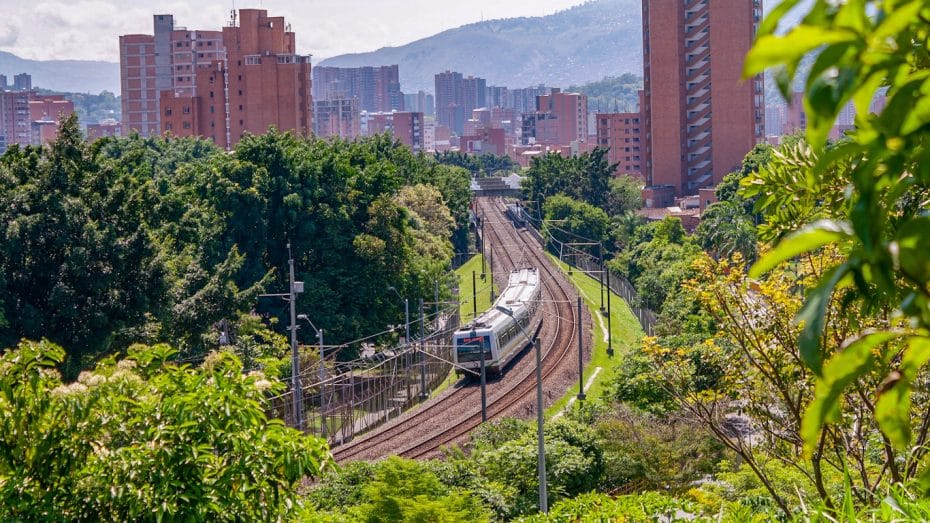
Medellín also has an extensive cable car system, commonly referred to as Metrocable, which was inaugurated in 2004 with Line K. Since then, more lines have been added: Line J in 2008, Line L in 2010 (connecting to Parque Arví), Line H in 2016, and most recently, Line M in 2019. These lines connect the metro system with hillside neighborhoods that are not otherwise easily accessible due to the city’s mountainous topography.
In addition to the metro and cable car systems, Medellín has a network of buses operated by multiple companies. The system includes traditional buses and smaller mini-buses that navigate through specific routes within neighborhoods.
Finally, taxis and apps like Uber work in the city. These transports are more expensive but highly recommended for safety and comfort, especially at night.
7. Nightlife in Medellín
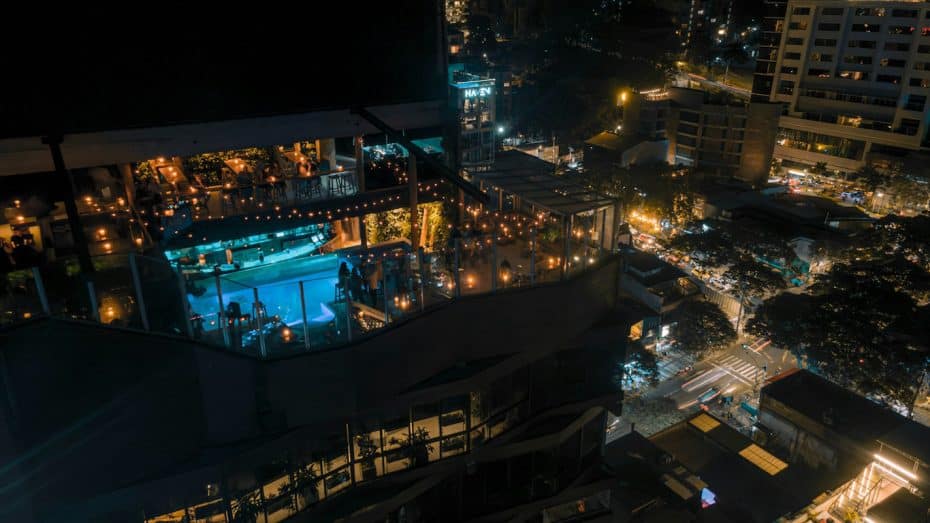
As we mentioned earlier, El Poblado, especially the sector known as Parque Lleras, is the place to party in Medellín. This neighborhood gathers most of the city’s bars and clubs, including LGBTIQA+ and gay-friendly venues. As such, you can dance to most genres in El Poblado, including electronic music, pop, salsa, and traditional Colombian music. Several hotels in this district also feature rooftop bars.
Another excellent nightlife area in Medellín is Laureles, northeast of El Poblado. Although it doesn’t have as many nightclubs as El Poblado, Laureles hosts some of the local’s favorite places to go out. Thus, staying in this neighborhood or partying in it will show you a more authentic side of Medellín than the touristy Poblado.
As for unforgettable experiences in Medellín, the chiva, also called a ‘party bus,’ ranks pretty high on the list. These colorful buses commonly come from rural areas in Colombia, where they are a regular mode of transportation. However, nowadays, Chivas are popular in big cities. They blast music loudly and pour drinks to the tourists who use them to tour different areas at night.
8. What to eat during your first time in Medellín and where
Medellín offers a variety of traditional dishes that reflect the region’s culinary traditions. Bandeja paisa is one of its most famous meals. It was initially designed to provide a high energy intake for agriculture workers. It typically features beans, rice, ground meat or beef, pork rind (chicharrón), fried eggs, plantain, chorizo, arepa, hogao sauce, and avocado. Trust me, you won’t need a starter dish if you order this meal.
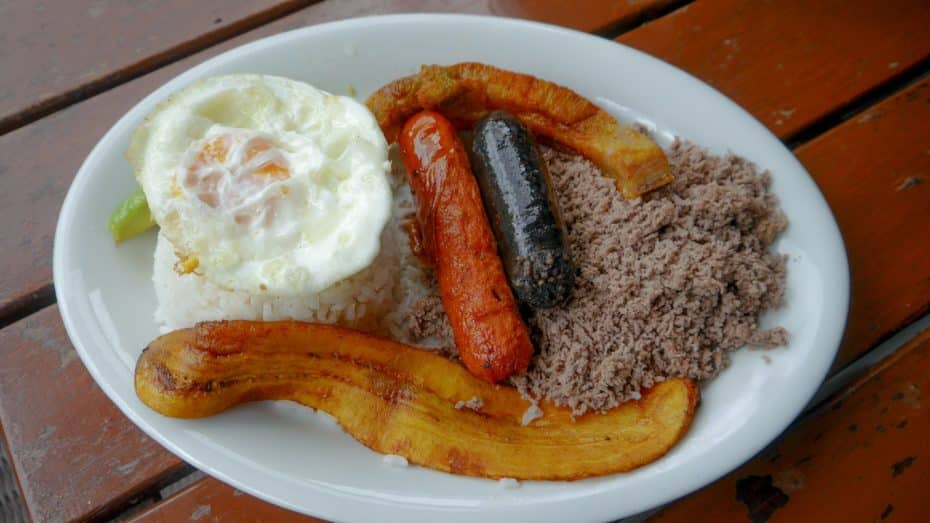
Another notable dish is the arepa de choclo, a sweet corn cake often paired with cheese. This dish is an example of the influence of corn throughout Medellín’s gastronomy. Mondongo Soup is also famous and contains diced tripe (the stomach of a cow), which is slowly cooked with chicken or beef stock, cilantro, and vegetables such as bell peppers, onions, tomatoes, cumin, and garlic. This soup is also not the lightest meal you could get in Medellín.
For desserts or snacks, you may encounter buñuelos, deep-fried dough balls made from cheese-curded dough, and natilla, a custard-like dessert traditionally served during Christmas. The latter’s ingredients are milk, sugar, cornstarch, and cinnamon.
Regarding areas known for food within Medellín, the Laureles neighborhood has garnered attention for its concentration of restaurants serving traditional Antioquian cuisine. Similarly, El Poblado gathers renowned restaurants serving cuisines from all over the world, including Colombian. El Poblado also hosts the Mercado del Río, a gastro-market with fast-food restaurants and traditional food vendors.
9. How to navigate Medellín safely
According to the US Department of State’s Colombia Travel Advisory, although Medellín’s overall crime rate has decreased, instances of petty theft, such as pickpocketing and bag-snatching, remain concerns in crowded locations. In particular, El Centro (the downtown area) shows higher petty crime rates. So, please stay alert, secure personal belongings, and avoid lonely streets, especially at night.
Users on Redditt refer to Medellín as a generally friendly and safe place, especially in El Poblado. This neighborhood’s strong police presence makes it the safest area to stay during a first trip to Medellín.
Another way to stay safe in Medellín is to remain vigilant on public transport. Night travel on the metro system is particularly discouraged unless it is unavoidable. If possible, use licensed taxis.
Finally, try to be mindful and not flaunt expensive objects. Flashy jewelry, expensive cameras, and watches are prone to pickpocketing.
10. Day trips in Medellín
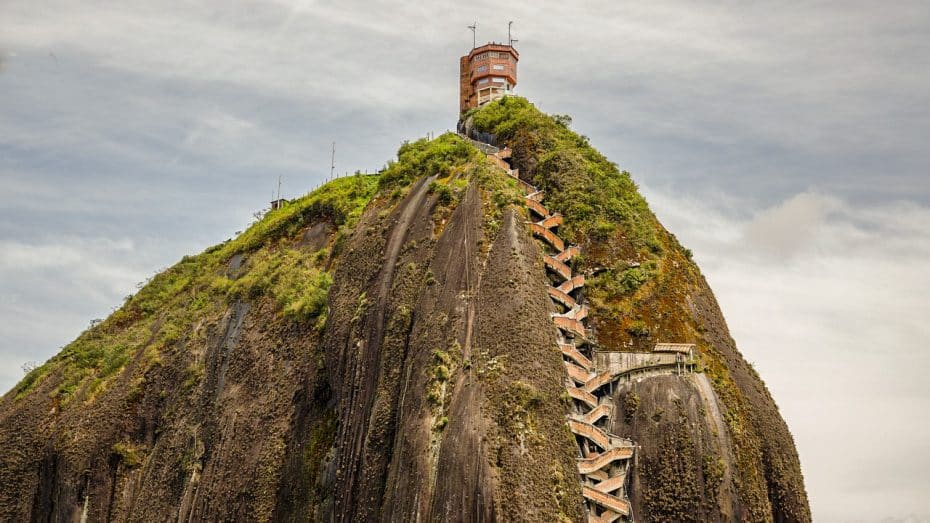
- Guatapé. Guatapé is approximately two hours from the city and the most popular day trip in Medellín. This town’s main attraction is La Piedra del Peñol, a rock that rises 656 feet (200 meters) above the surrounding landscape. You can reach the peak by going up 740 stairs on one side of the monolith to get stunning views. The colorful facades of buildings dating back several decades visually represent Guatapé’s culture. Public transportation options to Guatapé from Medellín include regular buses from Terminal del Norte. You can also book a tour to Guatapé with a boat, breakfast and lunch included.
- Jardín. Known for its preserved 19th-century architecture, Jardín is a National Monument of Colombia. This town is over three hours away from Medellín by bus from Terminal del Sur. A significant site in Jardín is the Basilica of the Immaculate Conception, a building whose construction started in 1918 and showcases neo-Gothic elements. The surrounding landscapes with their are stunning. Hence, you should book a coffee tour if you make this one of your day trips from Medellín.
Medellín Travel: Frequently Asked Questions
Yes, you can drive to Medellín through Route 25, connecting Bogotá to Medellín, and Route 60, which connects the coast of Colombia to the city.
The best time to visit Medellín for the first time is during its dry seasons, from December to February and from July to August. During these times, it rains less, and you can do more outdoor activities.
A flight from Bogotá to Medellín only takes about an hour. However, a bus ride takes about 8 hours through a very windy but scenic road.
Most of the must-see attractions in Medellín are close to each other in central areas. So, you should be able to see the most important sights in 3 days. However, a week in the city will allow you to explore nearby towns and make a day trip while in Medellín.



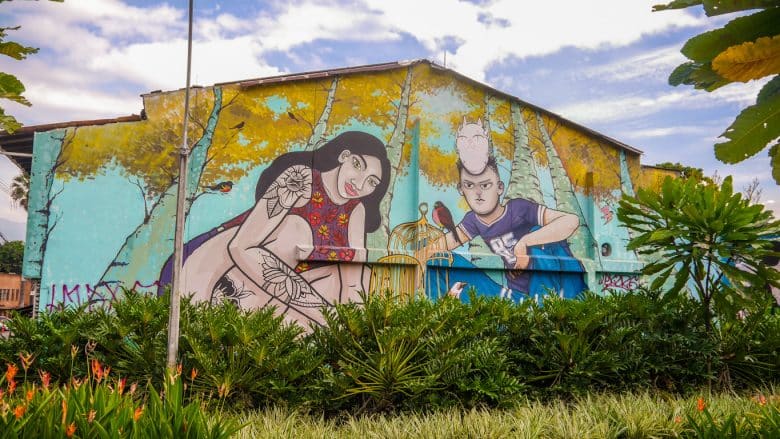

















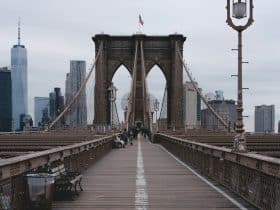
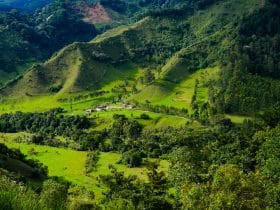

Check out the UrbanCoffeeTour.com a unique cultural experience completely off the beaten path in Barrio La Sierra community. The most unique coffee farm experience in Colombia right in the heart of Medellín.